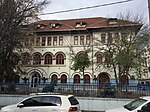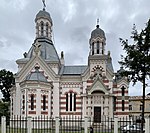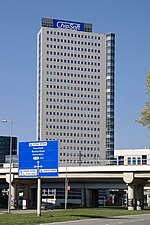Bucharest Academy of Economic Studies
1913 establishments in RomaniaBucharest Academy of Economic StudiesBusiness schools in RomaniaEducational institutions established in 1913Universities in Bucharest
The Bucharest University of Economic Studies (Romanian: Academia de Studii Economice din București, abbreviated ASE) is a public university in Bucharest, Romania. Founded in 1913 as the Academy of Higher-level Commercial and Industrial Studies (Academia de Înalte Studii Comerciale și Industriale (AISCI)), it has become one of the largest economic higher education institutes in both Romania and South-Eastern Europe. The Bucharest Academy of Economic Studies is classified as an advanced research and education university by the Ministry of Education. It is one of the five members of the Universitaria Consortium (the group of elite Romanian universities).
Excerpt from the Wikipedia article Bucharest Academy of Economic Studies (License: CC BY-SA 3.0, Authors).Bucharest Academy of Economic Studies
Strada Căderea Bastiliei, Bucharest Dorobanți (Sector 1)
Geographical coordinates (GPS) Address Nearby Places Show on map
Geographical coordinates (GPS)
| Latitude | Longitude |
|---|---|
| N 44.447566666667 ° | E 26.09665 ° |
Address
Clădirea Ion N. Angelescu
Strada Căderea Bastiliei
010617 Bucharest, Dorobanți (Sector 1)
Romania
Open on Google Maps










